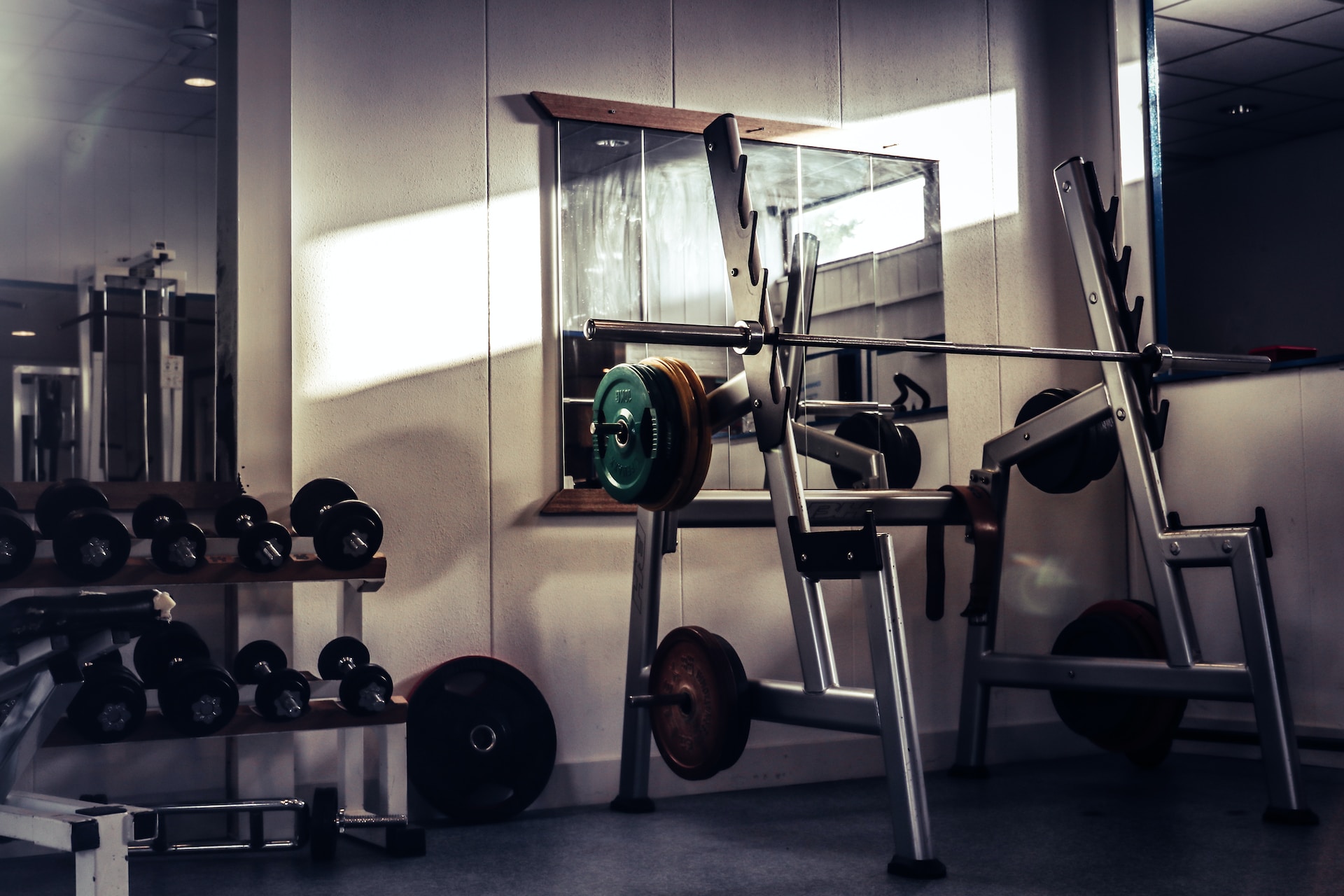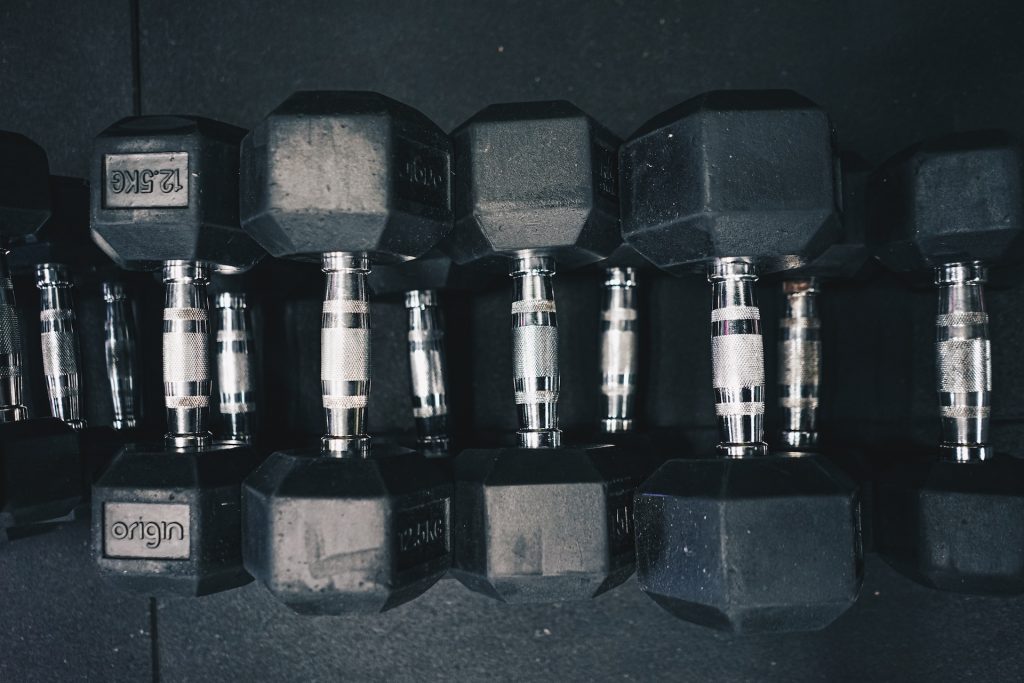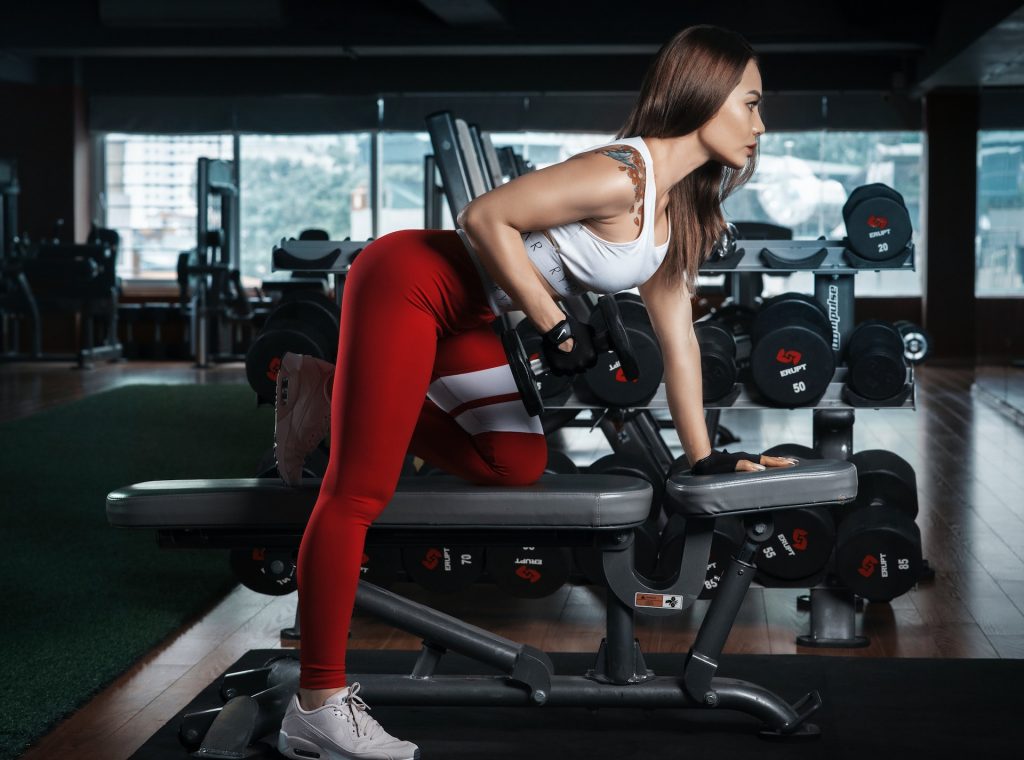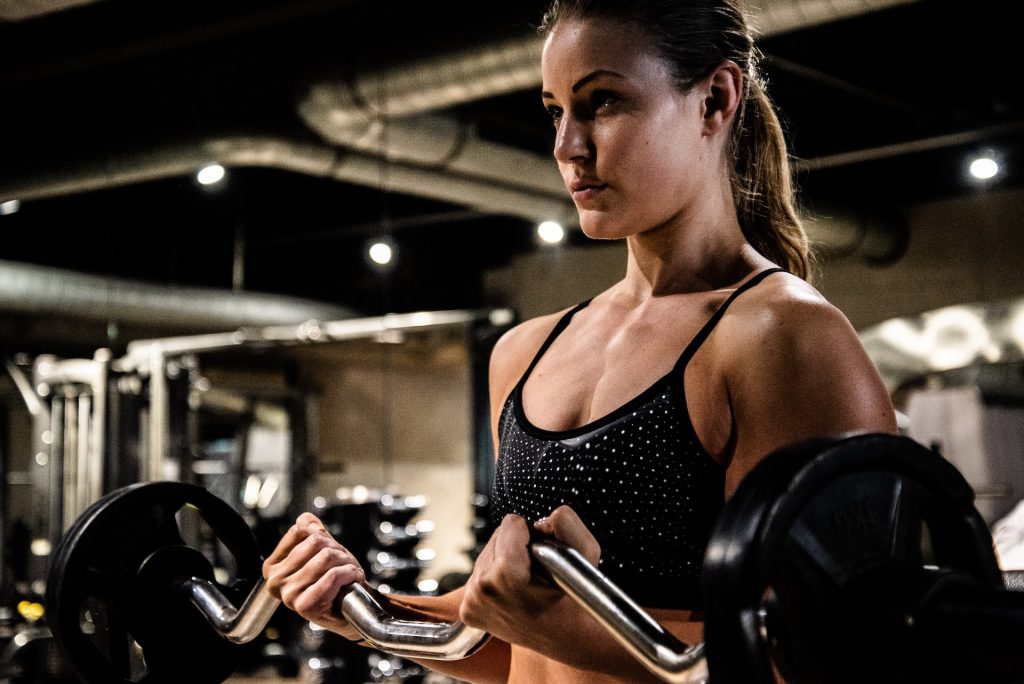
Barbells vs. Dumbbells – Which Gym Equipment is Right for You?
Strength training is a fundamental aspect of fitness that offers a wide range of benefits. It’s not just about bulging muscles; it’s about enhancing overall health and functionality. Strength training can improve bone density, boost metabolism, and increase muscle mass, which in turn can help with weight management. Furthermore, it plays a vital role in injury prevention and enhances daily activities by making them easier to perform.
When it comes to strength training, the debate between barbells and dumbbells has been ongoing for years. Both have their unique advantages and cater to different fitness goals and preferences. In this blog, we will delve into the specifics of each and help you make an informed choice based on your fitness objectives and needs.
Dynamo Fitness Equipment, Australia’s largest gym equipment store, provides fitness enthusiasts with top-notch options. With showrooms in Melbourne, Sydney, and Perth, and an online store for your convenience, Dynamo Fitness Equipment is your go-to destination for a wide range of gym equipment including barbells and dumbbells. Whether you prefer shopping in-store or online, they offer a wide selection to cater to all your fitness needs. Now, let’s explore the differences between barbells and dumbbells to help you decide which one suits you best.
Read Also: The Best Barbell Exercises for Mass and Strength
Understanding Barbells
Explanation of Barbells as Gym Equipment
Barbells are a staple in strength training and weightlifting. They consist of a long metal bar with weight plates attached to each end. Barbells come in various lengths and weights to accommodate different fitness levels and workout preferences. The basic design allows for a versatile range of exercises that target various muscle groups, making them a core component of any well-rounded strength training regimen.

Read Also: CrossFit: Pros and Cons
Advantages of Using Barbells
- Greater Load Capacity
One of the primary advantages of using barbells is their ability to handle heavy weights. Unlike dumbbells, which have a limited weight range, barbells can be loaded with substantial amounts of weight. This makes them ideal for those looking to build raw strength and power. The capacity to lift heavier weights helps stimulate muscle growth and improve overall muscle strength.
- Compound Exercises
Barbells are synonymous with compound exercises, which involve multiple muscle groups working together. Exercises like the squat, deadlift, bench press, and overhead press are all performed using barbells. These compound movements engage not only the primary muscle group but also stabilizer muscles, promoting functional strength and enhancing overall athleticism. They are efficient and time-saving, as they work several muscles in a single movement.
Limitations of Barbells
- Space Requirements
While barbells are highly effective for strength training, they do come with space considerations. Using a barbell necessitates a dedicated workout area with enough space to accommodate the bar’s length, your body’s movement range, and safety clearance. This may not be practical for individuals with limited workout space at home.
- Technique and Safety Concerns
Proper technique is crucial when using barbells to avoid injury. Exercises involving barbells require precise form, and beginners may find it challenging to master these movements. There is also a higher risk of injury when lifting heavy weights with poor form. Additionally, exercises like the bench press and squat, which use barbells, often require a spotter for safety, especially when lifting near your maximum capacity.
Understanding the strengths and limitations of barbells is essential for making an informed decision about incorporating them into your strength training routine. If you have the necessary space and are committed to learning proper form, barbells can be a valuable addition to your fitness regimen, particularly if you seek to increase strength and muscle mass.
Understanding Dumbbells
Dumbbells are compact, handheld weights that have been a cornerstone of strength training for generations. They consist of a short bar with weights attached to each end, offering a practical and versatile means of resistance training. Dumbbells come in various shapes, sizes, and materials, catering to individuals of all fitness levels.
Read Also: What Are Dumbbells? Types, Benefits, and Workouts

Advantages of Using Dumbbells
- Versatility and Range of Motion
Dumbbells are renowned for their versatility. They allow for a wide range of motion, enabling you to perform exercises that target specific muscle groups effectively. Whether you’re performing bicep curls, shoulder presses, or lunges, dumbbells provide a more natural movement pattern compared to some barbell exercises. This versatility makes them an excellent choice for beginners and advanced fitness enthusiasts alike.
- Space-Saving
One of the most significant advantages of dumbbells is their space efficiency. They take up minimal space, making them ideal for home gyms or small workout areas. You can easily store them when not in use, and their compact design means you can perform a full-body workout without the need for large and costly gym equipment.
Limitations of Dumbbells
- Limited Load Capacity
One notable limitation of dumbbells is their limited load capacity compared to barbells. While you can find heavy dumbbells, they may not suffice for advanced weightlifters aiming to lift extremely heavy weights. This could be a drawback if your primary goal is powerlifting or building extreme strength.
- Isolation Exercises
Dumbbells are primarily associated with isolation exercises, which target specific muscle groups. While this is advantageous for sculpting and defining muscles, it might not be the most efficient choice for those seeking to build overall strength. Compound exercises like squats or deadlifts, which engage multiple muscle groups simultaneously, are better suited to barbells.
Dumbbells offer versatility, convenience, and space-saving benefits for strength training. They are particularly well-suited for those looking to tone, define, or maintain muscle mass, as well as beginners who want to start with manageable weights. However, if your goal is powerlifting or lifting extremely heavy weights, you may find the limited load capacity of dumbbells to be a drawback. Understanding these advantages and limitations will help you determine if dumbbells align with your fitness objectives.
Choosing Between Barbells and Dumbbells
Assessing Your Fitness Goals
When deciding between barbells and dumbbells, it’s essential to start by assessing your fitness goals. Your goals will heavily influence which equipment is better suited to your needs.
- Muscle Building
If your primary objective is muscle building or bodybuilding, both barbells and dumbbells can be valuable tools. Barbells are excellent for heavy compound exercises that promote muscle growth, such as squats and deadlifts. Dumbbells, on the other hand, are versatile for isolation exercises that target specific muscle groups. Consider incorporating both into your routine for a well-rounded approach to muscle building.
- Strength Development
For those focused on pure strength development, barbells often take precedence. They allow you to lift heavier weights, making them ideal for powerlifting and strength-focused training programs. Barbells excel in compound movements that build overall strength efficiently.
- Functional Fitness
Functional fitness aims to improve your ability to perform everyday tasks and activities. Dumbbells are well-suited for this goal, as they enable a wider range of functional movements. They mimic real-life lifting and carrying scenarios, making them great for enhancing functional strength and mobility.
Considering Your Workout Space
The amount of workout space you have access to is another critical factor in choosing between barbells and dumbbells.
If you’re setting up a home gym or have limited workout space, dumbbells are often the more practical choice. They require less room and offer a full-body workout without the need for larger gym equipment. Barbells, on the other hand, may require more space, making them better suited for commercial gym environments with dedicated lifting areas.
Read Also: What Weight Dumbbells You Should Use for Workouts!
Evaluating Your Experience and Skill Level
Your experience and skill level in strength training also play a significant role in your equipment choice.
Beginner vs. Intermediate vs. Advanced
- Beginner: If you’re new to strength training, dumbbells can be an excellent starting point. They allow you to focus on mastering proper form without the added complexity of balancing a barbell. As you gain experience and build confidence, you can gradually incorporate barbell exercises into your routine.
- Intermediate: Intermediate lifters may benefit from a combination of both barbells and dumbbells. This allows you to continue improving your form and strength while benefiting from the versatility of dumbbells.
- Advanced: Advanced lifters may find that barbells are essential for reaching their strength and powerlifting goals. The ability to load heavier weights and perform complex compound movements becomes crucial at this stage.
The choice between barbells and dumbbells should align with your specific fitness goals, available workout space, and your experience and skill level. There is no one-size-fits-all answer, and many individuals find that a combination of both types of equipment provides the best balance for a comprehensive strength training program.
Workouts You Can Do With Barbells

A. Full-Body Barbell Workout Routine
A full-body barbell workout routine is an efficient way to target multiple muscle groups in a single session. Here’s a sample routine:
- Barbell Squats: Begin with squats to engage your lower body, including your quads, hamstrings, and glutes. Squats are a compound exercise that also activates your core for stability.
- Bench Press: Transition to bench presses to work your chest, shoulders, and triceps. This exercise is excellent for building upper-body strength and muscle definition.
- Bent-Over Rows: Work on your back muscles with bent-over rows. This movement targets the lats, traps, and rhomboids, helping improve posture and overall back strength.
- Barbell Deadlifts: Deadlifts are a powerful full-body exercise that targets the lower back, glutes, hamstrings, and traps. They are exceptional for building overall strength.
- Overhead Press: Finish the routine with overhead presses to develop your shoulder muscles. This exercise also engages the triceps and stabilizer muscles.
B. Split Routines with Barbells
Split routines with barbells allow you to focus on specific muscle groups during each workout. Here’s an example of a split routine:
Day 1: Upper Body
- Barbell Bench Press: Concentrate on the chest and triceps.
- Barbell Rows: Target the back and biceps.
- Barbell Shoulder Press: Focus on shoulder and triceps development.
Day 2: Lower Body
- Barbell Squats: Strengthen the lower body.
- Barbell Lunges: Enhance leg muscle definition.
- Barbell Deadlifts: Engage the back, glutes, and hamstrings.
Day 3: Rest or Active Recovery
Day 4: Full-Body Workout
- Incorporate compound exercises from the full-body routine (Day 1) for a comprehensive session.
Day 5: Rest or Active Recovery
Day 6: Upper Body
- Repeat the upper body split routine (Day 1) or introduce variations.
Day 7: Lower Body
- Repeat the lower body split routine (Day 2) or add variations.
C. Benefits of Each Routine
Full-Body Barbell Workout Routine Benefits:
- Time Efficiency: Targets multiple muscle groups in one session.
- Improved Coordination: Engages various muscle groups simultaneously.
- Balanced Development: Ensures balanced muscle development.
- Suitable for Beginners: A great starting point for novice lifters.
Split Routines with Barbells Benefits:
- Targeted Muscle Growth: Allows for specialized focus on specific muscle groups.
- Adequate Recovery: Provides muscle groups with sufficient recovery time between workouts.
- Versatility: You can customize split routines to align with your fitness goals.
- Advanced Training: Ideal for intermediate and advanced lifters looking to refine muscle groups.
Incorporating barbell workouts into your strength training regimen offers a versatile and effective way to achieve your fitness goals, whether you prefer full-body routines for efficiency or split routines for targeted muscle development. The key is to choose the approach that aligns with your objectives and progressively challenge yourself to achieve continuous growth and improvement.
Workouts You Can Do With Dumbbells
A. Full-Body Dumbbell Workout Routine
A full-body dumbbell workout routine is a versatile and efficient way to engage all major muscle groups. Here’s a sample routine:
- Dumbbell Squats: Start with dumbbell squats to target your quads, hamstrings, and glutes. Hold a dumbbell in each hand at shoulder height for added resistance.
- Dumbbell Bench Press: Lie on a bench and perform dumbbell bench presses to work your chest, shoulders, and triceps. Dumbbells allow for a greater range of motion compared to barbells.
- Dumbbell Rows: Perform dumbbell rows to engage your back muscles. These help improve posture and build a strong back. Hold a dumbbell in each hand and bend at the waist while keeping your back straight.
- Dumbbell Lunges: Lunges with dumbbells work on your leg strength and stability. Holding dumbbells at your sides or using a goblet hold adds resistance to this lower-body exercise.
- Dumbbell Shoulder Press: Finish with dumbbell shoulder presses to strengthen your shoulders and triceps. These can be done sitting or standing for variation.
B. Isolation Exercises with Dumbbells
Isolation exercises with dumbbells allow you to target specific muscle groups with precision. Here are some examples:
- Dumbbell Bicep Curls: Isolate your biceps by performing bicep curls with dumbbells. This exercise is effective for building arm strength and definition.
- Dumbbell Tricep Extensions: Focus on your triceps with dumbbell tricep extensions. These can be done standing or lying on a bench.
- Dumbbell Flyes: Isolate your chest muscles with dumbbell flies. Lie on a bench and open your arms wide to emphasize chest development.
- Dumbbell Lateral Raises: Target your shoulder’s lateral deltoid muscle with lateral raises. These help create shoulder width and improve shoulder aesthetics.
- Dumbbell Leg Raises: Isolate your quadriceps by performing leg raises with dumbbells. This exercise enhances leg muscle definition.
C. Benefits of Each Routine
Full-Body Dumbbell Workout Routine Benefits:
- Time Efficiency: Engages multiple muscle groups in one session.
- Functional Strength: Promotes balanced muscle development for everyday activities.
- Versatility: Dumbbells are readily available and suitable for home and gym workouts.
- Suitable for All Levels: Ideal for beginners and advanced lifters alike.
Isolation Exercises with Dumbbells Benefits:
- Targeted Muscle Growth: Allows precision in developing specific muscle groups.
- Injury Prevention: Helps correct muscle imbalances and weaknesses.
- Aesthetic Focus: Perfect for individuals looking to sculpt and define specific areas.
- Versatility: This can be easily incorporated into full-body or split routines.
Incorporating dumbbell workouts into your strength training regimen offers a flexible approach to meeting your fitness goals. Whether you prefer full-body routines for overall strength or isolation exercises for specific muscle group development, dumbbells provide the tools you need for a well-rounded and effective workout routine.
Combining Barbells and Dumbbells

A. Benefits of Incorporating Both Types of Equipment
Incorporating both barbells and dumbbells into your strength training routine offers several advantages that cater to different fitness goals and preferences:
- Versatility: Combining barbells and dumbbells provides a broad spectrum of exercises to choose from. Barbells excel in compound movements, while dumbbells allow for precise isolation exercises. This versatility keeps your workouts engaging and effective.
- Balanced Muscle Development: Barbells are fantastic for overall strength, but they may miss certain muscle groups. By introducing dumbbells, you can target specific areas that might be underdeveloped, ensuring balanced muscle growth.
- Progressive Overload: Barbells allow for heavier lifting, facilitating progressive overload, a key factor in muscle and strength development. Dumbbells complement this by adding variety and accommodating lighter weights for specific exercises.
- Functional Training: Combining both types of equipment mirrors real-life functional movements. Barbells are excellent for compound exercises like squats, and simulating activities such as lifting heavy objects. Dumbbells, with their range of motion, mimic everyday tasks, enhancing functional fitness.
B. Workout Routines That Combine Barbells and Dumbbells
Here are some workout routines that seamlessly blend barbells and dumbbells to maximize your fitness gains:
- Full-Body Hybrid Routine:
- Barbell Squats: Start with barbell squats for overall leg strength.
- Dumbbell Bench Press: Follow with dumbbell bench presses for chest development.
- Barbell Rows: Engage your back muscles with barbell rows.
- Dumbbell Lunges: Incorporate dumbbell lunges for lower-body stability.
- Barbell Deadlifts: Finish the routine with barbell deadlifts for full-body strength.
- Upper-Body Power and Definition:
- Barbell Bench Press: Begin with barbell bench presses to target the chest.
- Dumbbell Bicep Curls: Isolate your biceps with dumbbell curls.
- Barbell Rows: Work on your back muscles with barbell rows.
- Dumbbell Shoulder Press: Strengthen your shoulders and triceps.
- Dumbbell Tricep Extensions: Isolate triceps with dumbbell extensions.
- Lower-Body and Core Strength:
- Barbell Squats: Kick off with barbell squats for lower-body strength.
- Dumbbell Side Lunges: Incorporate side lunges with dumbbells for leg and core stability.
- Barbell Deadlifts: Engage your lower back and glutes with barbell deadlifts.
- Dumbbell Russian Twists: Finish with dumbbell Russian twists for core strength.
By combining barbells and dumbbells in your workout routines, you can tailor your training to your specific goals while reaping the benefits of both equipment types. This dynamic approach not only keeps your workouts interesting but also helps you achieve a well-rounded and balanced physique, whether you’re aiming for strength, muscle definition, or overall fitness.
Bottom Line
In the ongoing debate of barbells versus dumbbells, the choice ultimately comes down to your fitness goals, available space, and personal preferences. Both of these gym equipment options offer unique advantages that cater to a variety of fitness needs.
Barbells excel in heavy lifting and compound exercises, making them ideal for those focused on building raw strength and power. On the other hand, dumbbells offer versatility, precision in targeting specific muscle groups, and space-saving convenience.
For a comprehensive approach to strength training, consider incorporating both barbells and dumbbells into your routine. This combination provides a well-rounded fitness regimen that can help you achieve your goals effectively.
If you’re looking to invest in high-quality gym equipment, Dynamo Fitness Equipment is your ultimate destination. As the largest gym equipment store in the country, Dynamo Fitness Equipment boasts showrooms in Melbourne, Sydney, and Perth, ensuring you have convenient access to their extensive range of premium gym equipment, including a variety of barbells and dumbbells.
Whether you prefer shopping in-store or online, Dynamo Fitness Equipment is committed to providing you with the tools you need to achieve your fitness aspirations. Visit our website or explore our showrooms today to take the next step toward your fitness journey.
